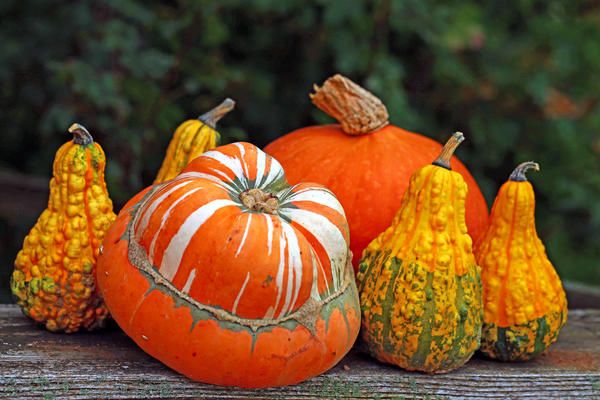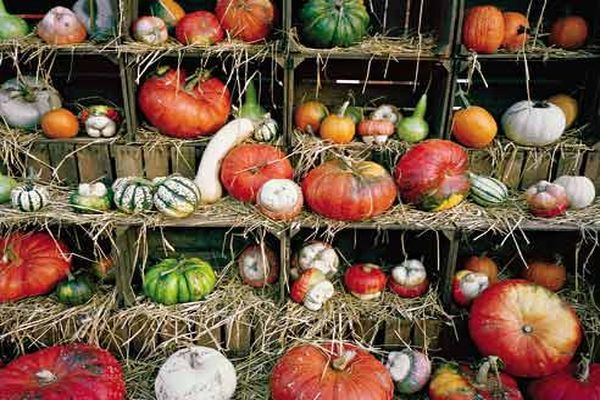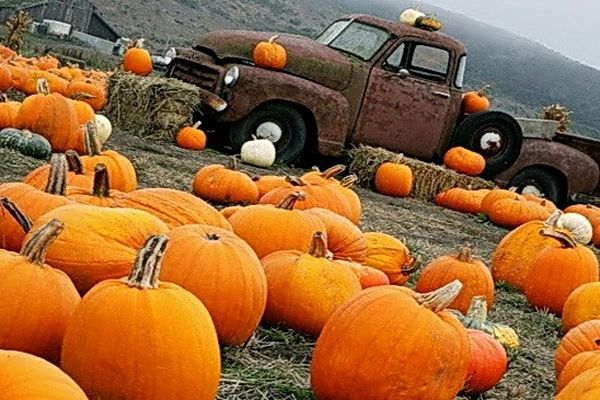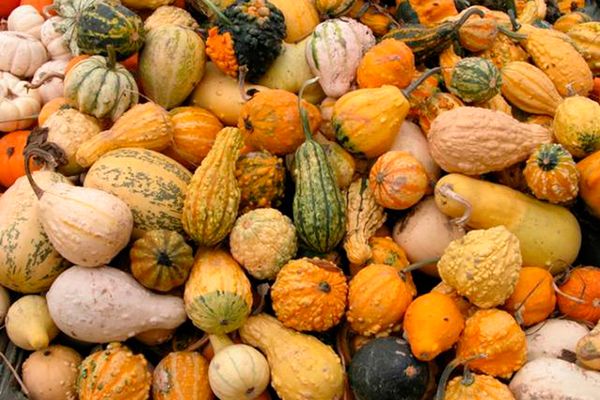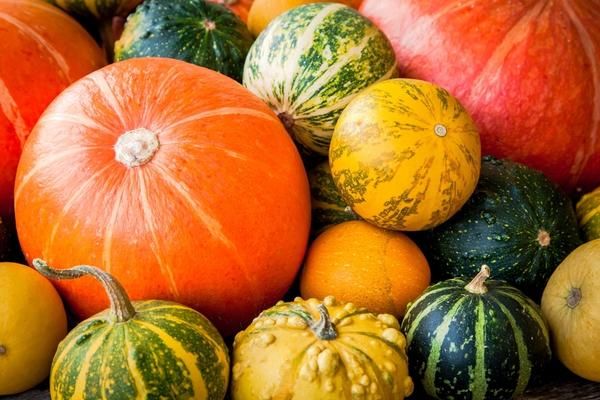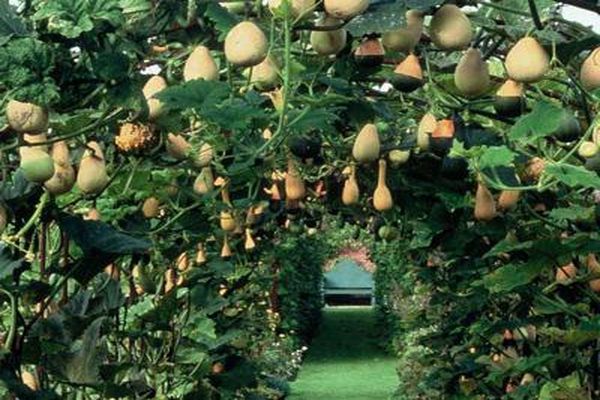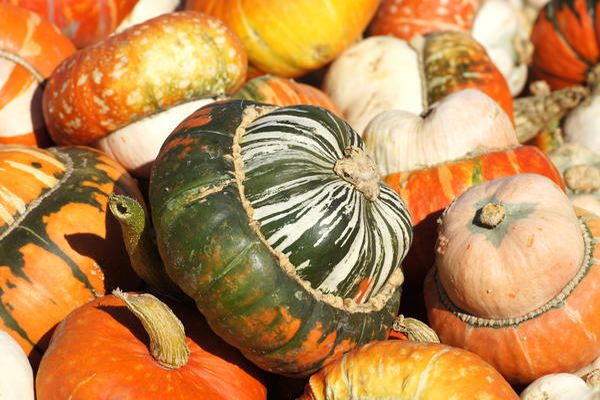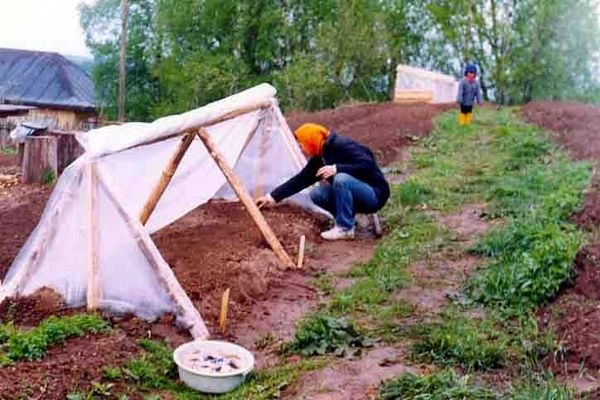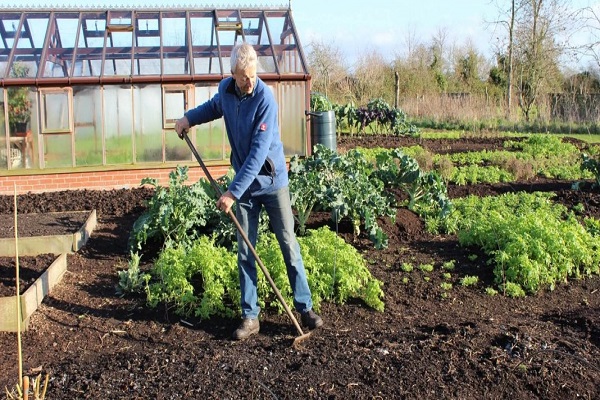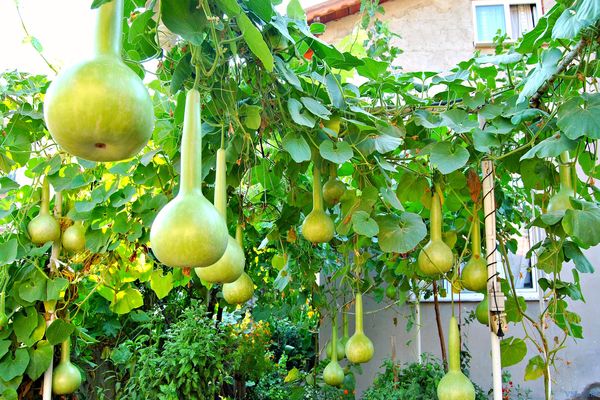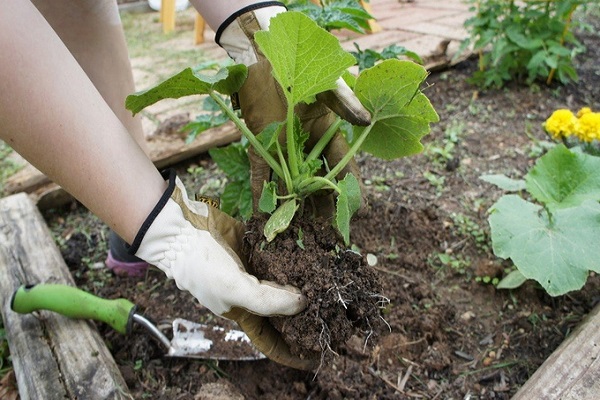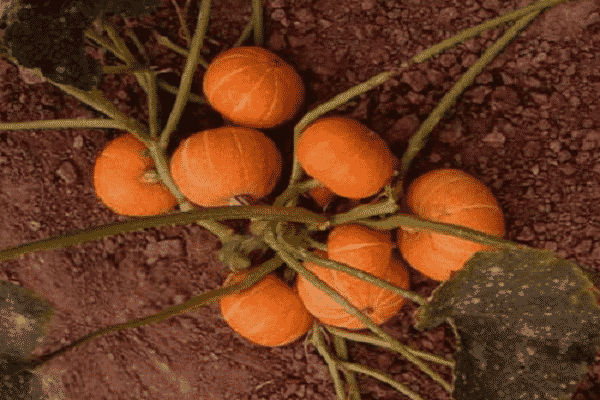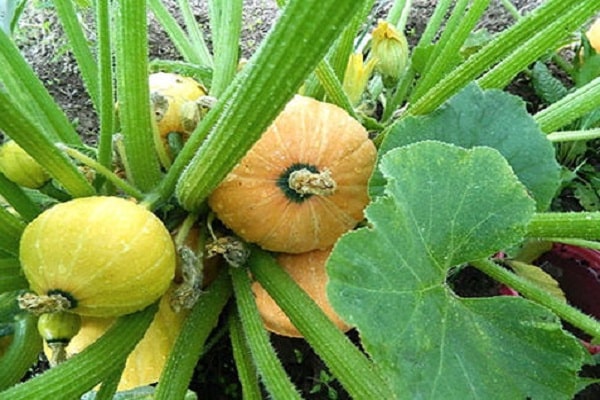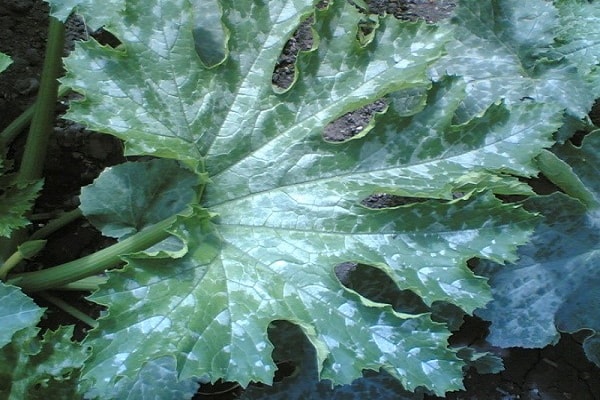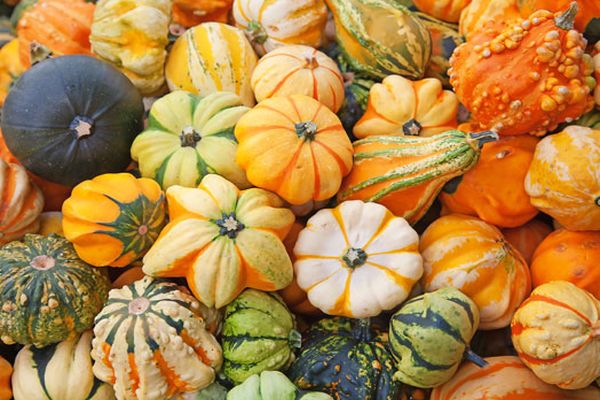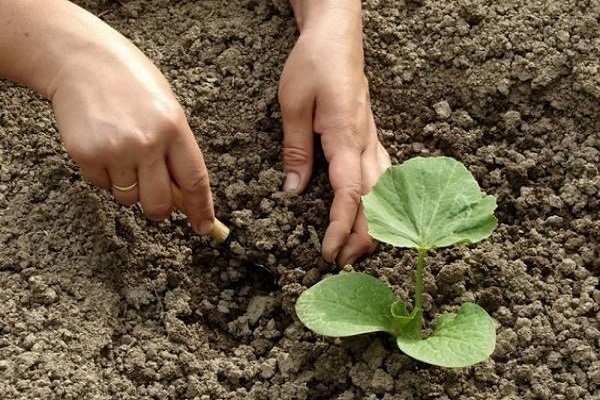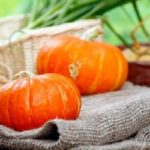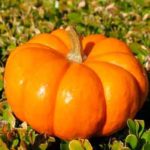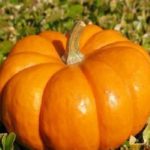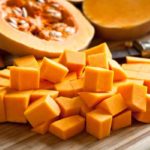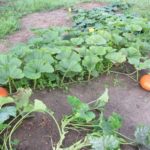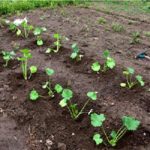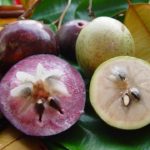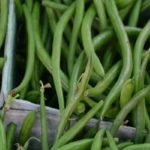Often, when decorating a garden, ordinary flowers and other decorative elements are used. However, some gardeners use unusual vegetables for this, which include decorative pumpkin. In the last few years, the plant has been gaining popularity among those who like to grow vegetables. Pumpkin bushes have quite strong shoots, on which large fruits with an unusual shape appear over time. They are also painted in bright colors, which will delight the eye not only of garden owners, but also of guests.
- Why is it worth growing it?
- Miniature decorative pumpkin
- Is it possible to eat it?
- Growing
- How are small varieties grown?
- Place for decorative pumpkin
- Seed selection
- Growing from seeds: agricultural techniques
- Seedling
- How to prepare seedlings?
- Proper planting of seedlings in open ground
- Planting seedlings in a greenhouse
- Caring for decorative pumpkin
- Feeding
- Pollination
- Varieties of decorative pumpkin
- Leginaria
- Crown or star gourd
- Warty
- Pear-shaped
- Calabash
- Mandarin Mandarin
- Orange
- Turban or pumpkin fungus log
- Jack be little
- Turkish turban
- Baby Boo
- Sweet Dumpling Sweet Dumpling
- Kleine bicolor
- Bischofsmutzen
- Cou-Tors Native
- Goose in apples
- Diseases and pests
- Application of ripe fruits
- How are pumpkins dried?
- How are finished pumpkins processed?
- Conclusion
Why is it worth growing it?
Before growing pumpkins bizarre shapes, you need to figure out why they are grown. There are several reasons why many people plant decorative pumpkin varieties:
- Beauty. The main reason is considered to be the beauty of pumpkin bushes. They have bright orange, green, yellow flowers, uniquely shaped leaves and unusual fruits, the originality of which attracts people.
- Growth rate. A feature of decorative pumpkin varieties is the growth rate of the bushes. Within a month they grow up to five meters in length, so many people use it for vertical gardening of country courtyards or gardens.
- Easy to care for. This plant is quite easy to care for, as it is unpretentious. It is enough to water the bushes regularly so that they do not wither from drought.
Miniature decorative pumpkin
There are quite a few decorative pumpkin varieties that anyone can purchase in the store. For example, vegetable growers often plant orange varieties of vegetables, as they differ from many other varieties with their bright orange color.
The fruits are round in shape and resemble an orange in appearance.There are varieties that are completely different from the orange types of the vegetable. These include bottle varieties, the fruits of which are shaped like a bottle. These vegetables have a mottled greenish color.
Despite the fact that the varieties of decorative pumpkins differ, they are all united by the miniature size of their fruits. The fruits of almost all varieties are small in size and weigh no more than 200–300 grams.
Is it possible to eat it?
Many people who plan to grow ornamental varieties are interested in whether they can be eaten and used for cooking.
Some people believe that ripe fruits are used only for decoration, and this is partly true. These varieties of pumpkins were bred specifically for use in design and therefore their taste is not very good. However, some types are still used for cooking.
For this, it is better to use only young fruits, since the ripe ones are covered with a hard crust and have a bitter taste. Therefore, ripe pumpkin fruits are used to feed livestock.
There are several ornamental varieties that were bred specifically for food consumption. These include Baby Boo, Sweet Dumpling and Bee Little.
Growing
To grow a decorative pumpkin yourself, you should follow the basic rules for growing ordinary pumpkin varieties.
The first half of June or the end of May is perfect for planting this vegetable, since by this time the night frosts will disappear. In the southern regions of the country, vegetables are planted using seeds, while in the northern regions the seedling method is used.
If planting is carried out correctly and the planted plants are properly cared for, the bushes will grow 5–8 meters in height.
How are small varieties grown?
Special mention should be made bush varieties of decorative pumpkin, since they have certain growing characteristics. They are planted in the ground on June 5–10. To do this, the area intended for planting is pre-fertilized with fertilizers. Then small holes are made in it with a distance of about 40–50 cm from each other. 2-3 seeds are placed in each hole, after which they are sprinkled with soil.
Such varieties are most often planted in small lawns or flower beds as a decorative decoration. In order for the plant to grow better, the soil is periodically amended with compost. Regular application of fertilizers will improve yields and accelerate fruit ripening.
Place for decorative pumpkin
Before growing any variety of pumpkin, choose the most suitable area for planting it. When choosing a site, take into account that pumpkin bushes need strong and reliable support, since at the end of the season a lot of green mass grows on the bushes. Therefore, many recommend planting vegetables in dense soils.
If the plant is planted in the garden, then well-warmed areas are selected for this, where beets, onions, carrots, legumes or cabbage were previously grown. It is not recommended to grow vegetables in places where cucumbers, potatoes, melons or zucchini previously grew. It is impossible to get a good harvest in such an area.
Also, when choosing, pay attention to the plants that will grow nearby. A pumpkin should not be planted if spinach, peas, beans or onions are planted near it. These plants attract pests that can harm your pumpkin bushes.
Seed selection
The quality of the harvest largely depends on the selected seeds for further planting. Therefore, it is recommended to pay attention to the choice of planting material.
If the pumpkin is going to be eaten, pay attention to the size of the variety. To make the fruits more tasty and sweet, varieties with small fruits are chosen for planting.
When choosing, pay attention to the appearance of the planting material. Its peel should be perfectly smooth and free of surface defects. If there are wavy stripes on the peel, then it is better not to choose such seeds, as they contain nitrates. Also, do not use seed with dark spots on the surface for planting.
Growing from seeds: agricultural techniques
When growing pumpkin from seeds, a seedless method is used, which is most often used by residents of the southern regions of the country. Seeds are planted in the soil only if the soil has warmed up well to a temperature of about 15 degrees.
Before planting, all seeds are pre-treated. To do this, they are heated for about 10 hours at a temperature of about 40–50 degrees, after which they are treated with an ash solution. This is done to speed up the appearance of the first shoots and the ripening of fruits.
When the seed is prepared, the plot is marked and rows with holes are made for planting the vegetable. The diameter of each hole must be at least 35 cm. After creating the rows, 2–4 seeds are placed in the holes, which are watered with warm water immediately after planting. All crops on the site are covered with film to protect the seedlings from possible frosts.
Seedling
Residents of the northern regions of the country are recommended to plant pumpkin in seedlings, since seeds planted in open ground will not germinate due to frost.
Before planting seeds for growing seedlings, they are engaged in preliminary preparation of the soil mixture.To prepare it, the soil is mixed with organic and mineral fertilizers, which will improve the germination of planted seeds. The prepared soil is placed in small peat pots with a diameter of about 20 cm. No more than one seed is planted in each pot. If you plant two or more seeds, they will not grow well.
All containers with planted pumpkin seeds are covered with film and transferred to a well-lit room.
How to prepare seedlings?
Before transplanting seedlings into open ground, it is necessary to first prepare and grow the seedlings. Therefore, it is recommended to familiarize yourself with the features of growing pumpkin seedlings.
After the first shoots appear, all pots with planted plants are placed on windowsills so that direct rays of light fall on them. In the room where the seedlings are grown, optimal temperature conditions are maintained. During the daytime, the temperature should not fall below 20 degrees, and at night - below 15 degrees. When growing, all seedlings are periodically watered with warm water. In this case, watering is carried out in such a way that the soil does not become too waterlogged.
Also, seedlings are regularly fed with fertilizers. To prepare the feeding mixture, add 20 grams of potassium sulfate, a liter of mullein and 20 grams of superphosphate to 10 liters of water. Two weeks before transplanting seedlings into open ground, harden the plants. To do this, containers with pumpkins are taken outside every day so that they get used to the new temperatures.
Proper planting of seedlings in open ground
Pumpkin needs open air and therefore its seedlings will have to be transplanted outside. As with planting seeds, planting seedlings in the ground begins with preparing the holes.For seedlings, the holes are made a little deeper than for seeds and therefore their depth should not be less than 10 cm. Fertilizers are added to each created hole in the form of 50 grams of ash, 40 grams of superphosphate mixed with water.
After fertilizing, all holes are moistened with warm water so that the soil is moist when planting the decorative pumpkin. Having finished watering, the seedlings are removed from the pots along with the roots, placed in the ground and covered with soil. Then the area is mulched with peat and re-sprinkled with dry soil.
Planting seedlings in a greenhouse
Sometimes, due to climate conditions, it is not possible to grow pumpkin bushes outside and you have to plant them in greenhouses. Before planting seedlings, you should make sure that all windows are completely open.
Planted plants need good ventilation when flowering. You should also take care of lighting, since without enough light the bushes will not grow well.
After preparing the greenhouse, holes are created for planting seedlings. As when planting in a garden, the depth of the holes should be about 10–12 cm. All rows are pre-watered with warm water, after which the seedlings are planted.
Caring for decorative pumpkin
When growing decorative varieties of pumpkins, you must take care of them. The productivity of plants depends on the quality of care for planted seedlings. Caring for pumpkin bushes involves regularly weeding the area to remove weeds, watering and fertilizing the planted bushes. Sometimes you have to do the pollination of plants yourself. This is most often done if the plant is grown in greenhouse conditions. However, sometimes incomplete fertilization of the ovaries also occurs when grown outdoors.
Feeding
It is recommended to regularly feed the bushes with fertilizers to increase the yield of planted seedlings. For the first time, fertilizers are added to the site 10–15 days after planting the seedlings in the garden. To do this, manure and chicken droppings are added to the soil in a ratio of one to four. Such organic fertilizers are added three times a month.
Experienced gardeners also recommend adding a solution of wood ash to the soil where pumpkins are grown. It enriches the soil with nutrients and protects the leaves of the bushes from yellowing. To prepare it, 10 liters of water are mixed with 100 grams of ash.
To use this fertilizer, small holes are made around each bush into which the prepared mixture is poured. After fertilizing is completed, all holes with fertilizers are filled with soil.
Pollination
It often happens that when growing pumpkin plants, some of the ovaries rot and fall off. Many people think that this happens due to a lack of nutritional components in the soil. However, this problem is associated with poor pollination by the plant. Therefore, in order to get a good harvest in the future, it is recommended to pollinate the plants yourself.
Pollination should be done before 11 a.m., as this is the most suitable time. To do this, you will have to pick a male flower from one bush, tear out its petals and touch the anthers of the plant to the pistil of one of the female flowers. The procedure is repeated until all female flowers are pollinated.
Varieties of decorative pumpkin
Pumpkin vegetable culture belongs to melon vegetables and is the most common plant among other representatives. It is no secret that there are three main types of pumpkins, which include hard-barked, large-fruited and nutmeg varieties.Many people consider decorative pumpkins to be a separate type of plant, but this is not so. Ornamental pumpkin varieties are slightly modified varieties of hard-barked plants.
Decorative pumpkin plants also come in different types. Therefore, before planting, it is recommended to familiarize yourself with the most common decorative representatives.
Leginaria
Lagenaria pumpkin is popular among those who like to grow vegetables. The plant differs from other ornamental varieties in the length of its bushes, which grow 10–12 meters. The fruits of the plant have a bizarre shape, resembling a matryoshka doll. In our country, this variety is usually called snake-shaped pumpkin or gourd.
This variety of pumpkin plants is planted not only to decorate the site, but also for food. It is also often used in folk medicine and preparations are made from it to treat diseases of the heart, stomach and kidneys.
Crown or star gourd
A special feature of this variety is the unique shape of the fruits, which can be umbrella-shaped, star-shaped or crown-shaped. The plant is considered low-growing, as it grows up to 1–2 meters in height. Most often it is used to decorate the walls of buildings, arches or gazebos.
The star variety loves warmth and is therefore recommended to be planted in the second half of May.
Warty
The warty variety is considered one of the most unique, as it has a wide range of colors. The fruits can be yellow, white, black and orange. Sometimes there are spotted and striped pumpkins that are painted in two colors at once.
It is customary to plant bushes in April or early May. With proper care, the plant grows up to three meters.
Pear-shaped
A decorative climbing pumpkin in the shape of a pear attracts the attention of many vegetable growers.This plant is used to decorate summer cottages and for consumption.
The peculiarities of the variety include pear-shaped fruits that can be painted in different colors. Some varieties of pear-shaped pumpkins have a two-tone striped color.
Calabash
Another common ornamental pumpkin plant is the bottle gourd. Bottle variety pumpkin vines are quite long and grow up to 15 meters. The plant has beneficial properties, which is why it is often used to prepare medicines. The fruits of the variety are also used to create dishes. In India, China and Africa, utensils made from this plant are still used.
Mandarin Mandarin
From the name of the variety, it becomes clear that the fruits of the vegetable are similar in appearance to tangerines. They are orange in color and have a round shape. Also, the fruits are not very large and weigh only 300 grams.
Orange
This ornamental variety looks similar to an orange, as its fruits have a bright orange color and their shape resembles a fruit. Each pumpkin fruit weighs about 250 grams.
Turban or pumpkin fungus log
This variety differs from many ornamental pumpkin plants in that it has rather large fruits. Another difference between the turban-shaped pumpkin is that the vegetable consists of two parts. Its upper part is slightly convex and stands out against the background of the lower part. Because of this, the shape of the fruit resembles a fungus.
The plant is not classified as a tall pumpkin variety, as it grows up to one and a half meters.
Jack be little
This variety of pumpkin resembles the Orange variety, since the fruits are also painted in bright orange colors and have a diameter of about 10 cm.The bushes are characterized by high productivity, since each of them grows about 10–15 fruits weighing 100–120 grams. The variety is used to decorate the site and prepare vegetable dishes.
Turkish turban
This edible variety differs from other species in its growth rate. In a few weeks the plant grows up to six meters. This allows you to use bushes when organizing vertical gardening of a site. Turkish turban is considered a light-loving variety and therefore it is planted only in areas with good lighting. The fruits of the ornamental vegetable are not very large and grow only 15 cm in diameter.
Baby Boo
Baby Boo is considered a unique pumpkin variety, as its fruits are perfectly white in color. The weight of each pumpkin does not exceed 200 grams, and the diameter is 10–15 cm. The surface of the vegetable is perfectly flat and smooth. A ripe plant is often used not for decorating areas, but for cooking.
Sweet Dumpling Sweet Dumpling
This variety of pumpkin plants is considered the most beautiful. Its fruits are green and covered with small orange stripes. The variety is used for interior decoration.
Kleine bicolor
The variety belongs to the pear-shaped varieties of pumpkins, as their fruits are pear-shaped. The color of ripe vegetables varies, but green pumpkins are more common.
Bischofsmutzen
Vegetables belonging to the Bischofsmutzen variety are less common than others. A characteristic feature of such plants is considered to be ripe pumpkins, which consist of hemispheres of different sizes. Half of the vegetable is painted white, and the other half is green or red.
Cou-Tors Native
The plant belongs to the varieties of torticollis.The fruits have an original shape, which distinguishes them from other types of vegetables. They are swan-shaped and covered with orange bumps all over their surface.
Goose in apples
A special feature of the Goose in Apples pumpkin variety is its fertility. About five kilograms of crop are harvested from one bush. The collected fruits are used to prepare pumpkin porridge and puree.
Diseases and pests
The bushes of this vegetable crop often suffer from fungal diseases. Many bushes die from black mold, which stops plant growth. When the disease appears, the leaves become covered with small spots. Over time, the stains begin to dry out and cavities appear in their places.
Powdery mildew is also considered a common disease. A whitish coating appears on the leaves of plants with the disease, which looks like flour. Leaves with plaque gradually dry out and fall off.
Among the dangerous insects, slugs should be highlighted, which feed on the leaves of bushes. Most often, these pests appear on plants after prolonged rains. It is recommended to get rid of slugs immediately, as they take root on the site for several years.
Application of ripe fruits
Sometimes people who grow decorative pumpkin varieties simply don’t know what to do with it. Of course, many try to use the fruits in cooking.
Some varieties are great for canning and preparing vegetable salads or dishes. However, most often decorative pumpkins are used to decorate rooms or gardens. Dried fruits are used to make excellent handicrafts, which include lanterns, vases, boxes and even candle stands.
Creative people use the vegetable to create artistic paintings and burn paintings.
How are pumpkins dried?
Particular attention is paid to the peculiarities of drying the collected fruits, since dried pumpkin is often used for decoration. The entire harvested crop is carefully sorted to weed out unripe pumpkins. To distinguish ripe fruits from unripe ones, pay attention to their dried stalk. Also, it is almost impossible to leave scratches on a fully ripe pumpkin.
All selected ripe pumpkins are washed from dirt with warm water, wiped dry and treated with an alcohol solution. Then the vegetables are transferred to a warm room with good ventilation for further drying. It is necessary to regularly inspect the harvested crops, as some of them rot when dried. Rotten fruits are disposed of immediately so that the rot does not spread to neighboring pumpkins.
Also, when examining vegetables, pay attention to the presence of mold on their surface. If signs of mold are noticed on the peel, the vegetables are immediately treated with antiseptic agents. Sometimes you get rid of it with rags and bleach.
To make sure that the pumpkin is well dried, it is thrown into a container of water. If it sinks, it means the crop has not yet dried completely.
How are finished pumpkins processed?
When using dried pumpkins to decorate the interior of your home, you will have to pre-treat the vegetable. First, all fruits are polished with sandpaper to get rid of the husks on the surface. Then a design is cut out on the walls and painted. Some people rub the surface of the fruit with wax to make it more durable.
When making dishes, pumpkins are drilled with a drill with various drill bits to make holes of the required diameters in them. Before you start drilling, the vegetable is opened and all seeds and pulp are removed from it.
Conclusion
Many vegetable lovers are engaged in growing decorative varieties of pumpkins. Before you start planting such a plant, you should familiarize yourself with the known varieties and the characteristics of their cultivation in the garden or greenhouse.

